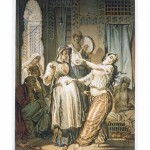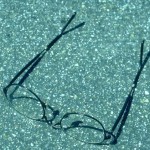 There’s a lovely line in a song by Leonard Cohen that goes “there’s a crack in everything … that’s how the light gets in.”
There’s a lovely line in a song by Leonard Cohen that goes “there’s a crack in everything … that’s how the light gets in.”
For those of us who live in the northern hemisphere, now is the most light-filled time of the year
If you’re way up north, there’s hardly any darkness at all. Growing up in England I remember this time of year as filled with long, late evenings, playing in the forest or on the Village Green, and the short nights hardly ever seemed to lose their silvery sheen.
As a writer, you want to radiate. You want to drop the laser beam and become like a star sending out magical silvery beams from all sides. You want to let go of your phosphorescent trail of past events and find out how to shape new experiences and present ways. You want to turn on your lights to find out how to be alive, now, in the world as it is, not only how it was back at the end of a tunnel of all that is passed.
Time is not only a tunnel, nor only a river, it is a bubble, your bubble. It is all her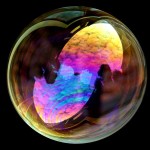 e—in you and you are in it. So, like the sun, let yourself shine in all directions. Fill your bubble with light, past, present, and future.
e—in you and you are in it. So, like the sun, let yourself shine in all directions. Fill your bubble with light, past, present, and future.
Don’t keep your light under a bushel. Be light-footed. Move lightly into new activities. Bring your light to new projects. Lighten up. And enlighten.
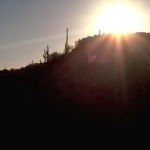 Writing Practice – Open the Crack
Writing Practice – Open the Crack
Let more light to come into your work. By this I mean that there is very little you need to do other than to see things as they really are. Let the play of light and shadow, dusk, the short silvery moon-filled night and early dawn fill you with a sense of being here now. Emerge from shadowy world in which you usually write, where sometimes things that are imagined seem more real than the walls around you.
Light is like energy and energy is what you need to pour into yourself so you can reshape your creative self in new ways. This is an opportunity to channel your life energies from darkness into light. Light shines and it reshapes.
 So think of a lovely crack in the roof of a cave in which you write. Feel the crack widening, and letting in a sweet glow that surrounds your desk, couch, grove, or gazebo – wherever it is you do your best and happiest writing. Let the light fill out and spread across the pages or the screen so that there’s a rich white-gold glow around it.
So think of a lovely crack in the roof of a cave in which you write. Feel the crack widening, and letting in a sweet glow that surrounds your desk, couch, grove, or gazebo – wherever it is you do your best and happiest writing. Let the light fill out and spread across the pages or the screen so that there’s a rich white-gold glow around it.
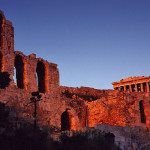 There is an old Greek legend about a king and a wise man named Diogenes. Diogenes lived in a large barrel at the gates of Athens. In spite of his deliberate poverty, he was respected throughout the ancient world. One day, a great king came to visit Athens. As he entered the city, he paused and, with the blind arrogance of the powerful, he asked if there was anything he could do for the poor old man.
There is an old Greek legend about a king and a wise man named Diogenes. Diogenes lived in a large barrel at the gates of Athens. In spite of his deliberate poverty, he was respected throughout the ancient world. One day, a great king came to visit Athens. As he entered the city, he paused and, with the blind arrogance of the powerful, he asked if there was anything he could do for the poor old man.
Diogenes looked up with mystifying delight in his eyes. “Yes,” he told his self-satisfied visitor, “you can get out of my light.”
Be like Diogenes.
Cherish your own light.
Facts of Light:
 Ancient Greece: Pythagoras believed that vision resulted from light rays emerging from a person’s eye and striking an object. Epicurus argued that objects produce light rays, which then travel to the eye. Euclid and Ptolemy thought that light bounces or bends off a surface as it passes from one transparent medium to another.
Ancient Greece: Pythagoras believed that vision resulted from light rays emerging from a person’s eye and striking an object. Epicurus argued that objects produce light rays, which then travel to the eye. Euclid and Ptolemy thought that light bounces or bends off a surface as it passes from one transparent medium to another.
Arab scholars: The concept of geometrical optics to create lenses, mirrors, and prisms was explored by many scholars and scientists around the end of the first millennium A.D. Ibn al-Haytham described vision as light rays bouncing from an object to a person’s eye. He also invented the pinhole camera, he was the first to explain the laws of refraction, and he studied and accurately described how light works on rainbows and eclipses.
Europe: In 1690, Christiaan Huygens published his undulatory theory in his Treatise on Light. His idea was that there exists an invisible medium or “ether” that fills up the empty space between objects. Light is formed when a luminous “body” causes a series of waves or vibrations in this ether. Those waves move until they encounter an object. If that object is an eye, the waves stimulate vision. (Rather like the question of whether when a tree falls in the forest does it make a sound if no one is there to hear it…?)
More Europe: And In 1704, Newton described light as corpuscles, or particles. He claimed light travels in straight lines and bounces back, like a rubber ball off a wall.
Which one of these theories are true?
Paradoxically, all of them are.
- quietly waiting for it to happen
- a small bridge across the stream
- red roses in the park

